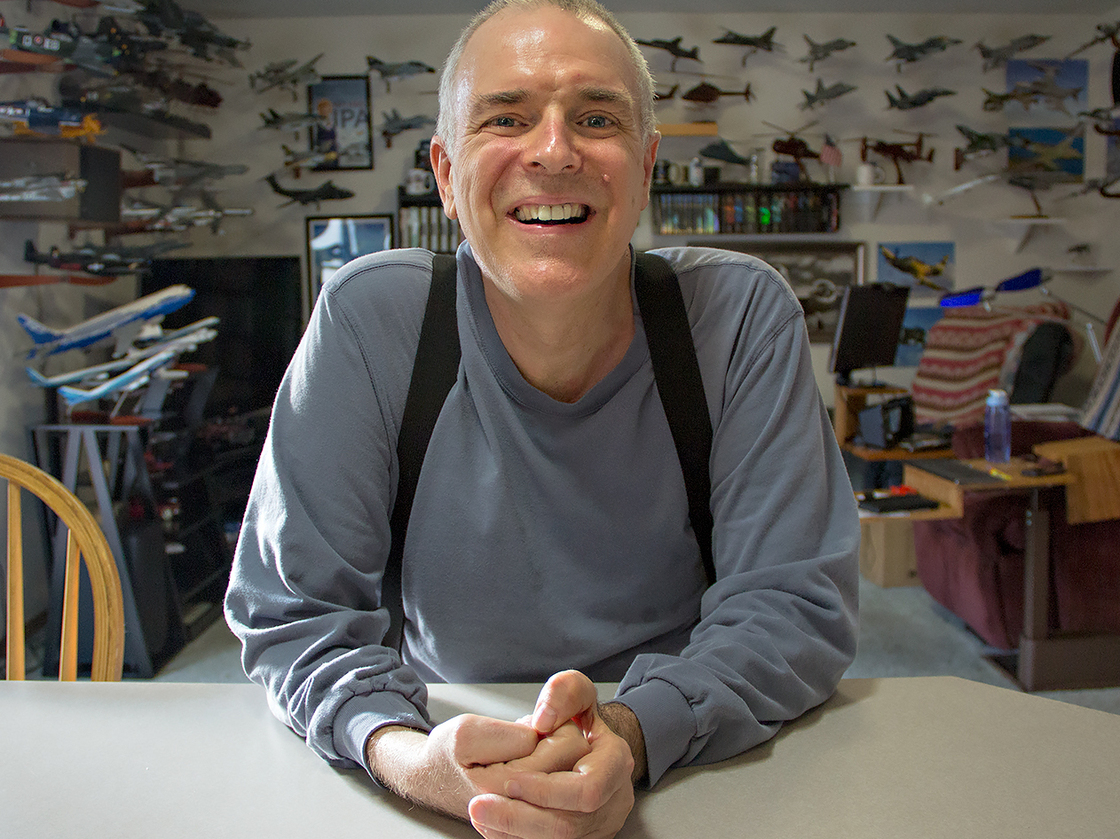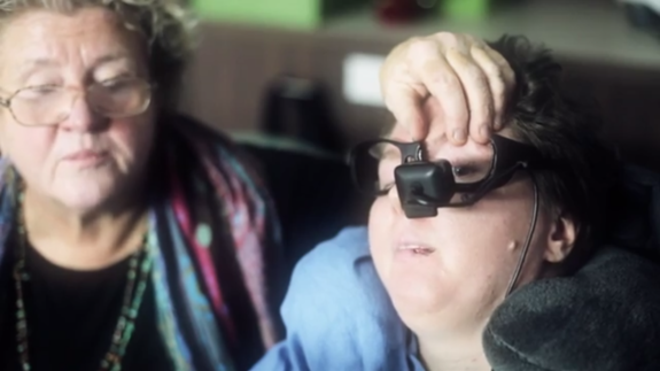32 and 16 Years Ago - Computer Help
aac assistive tech Assistive Technology augmentative communicationFrom: IEEE Computer - January 2014 - page 16
Personal computers aid the handicapped
From: IEEE Computer - January 1982
By: Ware Myers - Computer staff
"The personal computer provides a new kind of leverage for bringing aid to the handicapped," declared Paul L. Hazan, director of the First National Search for Applications of Personal Computing to Aid the Handicapped. The search was conducted by the Applied Physics Laboratory of the Johns Hopkins University with funding provided by the National Science Foundation and Radio Shack, a division of Tandy Corporation. The Computer Society was a program associate of the effort.
"Over the years a great deal of worthy research has gone on," Hazan continued. Unfortunately the end result of much of the earlier research in the field was costly special-purpose equipment that sometimes ran as much as
$70,000 to $100,000 per individual helped. Consequently, it was difficult to find funds to get the products into the marketplace. Moreover, continued maintenance of special-purpose equipment was difficult and expensive. The final payoff - the number of handicapped helped - was therefore limited.
Personal computer leverage. The advent of mass marketed and reasonably priced computers brings with it the potential for change in the existing situation, Hazan pointed out. He mentioned that although it has long been recognized that computers extend an individual's mental reach, in the case of the handicapped (with restricted physical capabilities), the possibility also exists to extend the physical reach of this group of users.
If the personal computer can be brought to bear on this problem, there are a number of built-in advantages. First, it is now low enough in cost for the handicapped themselves, or their families and friends, to afford; alternatively, in the workplace an employer can finance it for a potential employee. This makes a large, centrally financed support program unnecessary.
Secondly, the infrastructure for the application of personal computers already exists. There is a nationwide - even worldwide - network of dealers, maintenance, and training, and arrangements for the distribution of programs are growing.
Finally, personal computers to aid the handicapped constitute a significant business opportunity, both for the makers and marketers of personal computers and for those who construct and sell peripherals and input/output devices.
Given 20 million handicapped in the United States (a conservative estimate), Hazan calculates that if only two percent of them acquire a personal computer, they would create a potential market of 400,000 buyers - a figure in the same ball park as the total number of personal computers sold to date.
Assuming that the average price for the units is $2000, including peripherals, input/output devices, and programs, the actual dollar value of this market is $800,000,000. "Enough for industry to pay attention," Hazan noted. And the two percent market is just a guess. No doubt it will ultimately be much more. The point is that while the personal computer may be just a hobby for the able-bodied, with the proper applications it can become a necessity for people with a variety of disabilities.
The search for applications. The First National Search, announced in November 1980, was an effort to bring grassroots initiatives to bear on the task of finding a variety of methods to apply the personal computer to the needs of the handicapped. It was highlighted by a national competition for ideas, devices, methods, and computer programs to help handicapped people overcome difficulties in learning, working, and successfully adapting to home and community settings.
In the spring, orientation workshops were held at major rehabilitation centers throughout the United States to bring together potential "inventors,"
handicapped people, and professionals in the educational, technical, and rehabilitation fields. Over 900 entries were received by the June 30, 1981 deadline.
In August regional exhibits were held in ten cities - Boston, New York, Baltimore, Atlanta, Chicago, Houston, Kansas City, Denver, San Francisco, and Seattle. Awards were made to over 100 regional winners. From the pool of regional winners a national panel of judges selected 30 entrants to exhibit their work in Washington, DC. Of these, 28 made it to the Great Hall of the National Academy of Sciences on October 31 and November 1, attracting substantial numbers of the handicapped and those who work with them, as well as three or four television news crews. One of the reporters, himself blind, represented National Public Radio.
The next day the winners were honored at a banquet in the Mayflower Hotel.
This banquet was also attended by government and industry representatives with an interest in the subject. At the dinner the three top-place winners and seven honorable mention recipients were named (see photos and box).
During the following two days the 28 winners explained their developments at a workshop held at the Applied Physics Laboratory, near Washington.
Proceedings of this conference containing almost 100 papers - all the regional and national winners - are available from the Computer Society.
What next? The Applied Physics Laboratory has a National Science Foundation grant to study the feasibility of setting up a data base to hold application programs for the handicapped. The search turned up a number of excellent programs and some means of making them available to handicapped users is needed. If the idea is feasible and funding becomes available, a potential user could dial up the data base, select programs of interest from a menu, view a demonstration of the program he selects, and ultimately download it into his own equipment.
The First National Search is now history and the word first implies a second.
There seems to be general agreement that the making of inventions is too time-consuming for an annual search to be practical. The receipt of inquiries from 19 countries also suggests that something more than "national" is needed. Hazan expects another search to follow, but there is much work to be done and funds to be raised before it can be launched.
Photo Caption:
Lewis F. Kornfeld (left), retired president of Radio Shack, presents the first prize of $10,000 to Harry Levitt of the City University of New York for his Portable Telecommunicator for the Deaf. Levitt programmed a TRS 80 pocket computer to send and receive messages over the telephone via a TRS interface, enabling the deaf to commuhicate with each other or with their normal-hearing friends.
The other award winners were
Second Prize ($3000): Mark Friedman, Mark Dzmura, Gary Kiliany, and Drew Anderson - Eye Tracker
Third Prize ($1500): Robin L. Hight - Lip Reader Trainer
Honorable Mention Awards ($500):
Joseph T. Cohn - Augmentative Communication Devices Randy W. Dipner - Micro-Braille System Sandra J. Jackson - Programs for Learning Disabled David L. Jaffe - Ultrasonic Head Control for Wheelchair Raymond Kurzweil - Reading Machine for Blind Paul F. Schwejda - Firmware Card and Training Disk Robert E. Stepp III - Braille Word Processor
(IEEE membership required)










 . Using an expensive eye-tracking system, Maggie was able to communicate rudimentarily. But the system was complicated and required a lot of adjustments to work properly, said Maggie's mother, Nancy Worthen.
. Using an expensive eye-tracking system, Maggie was able to communicate rudimentarily. But the system was complicated and required a lot of adjustments to work properly, said Maggie's mother, Nancy Worthen.



